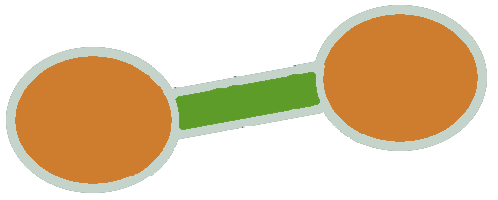Ninatoka
 concept
conceptHomocysteine
Homocysteine is an amino acid not used in protein synthesis. Its role is to serve as an intermediate in methionine metabolism. Homocysteine itself is located at a branch-point of metabolic pathways: either it is irreversibly degraded via the transsulphuration pathway to cysteine or it is remethylated back to methionine. ----------- Homocysteine /ˌhoʊmoʊˈsɪstiːn/ is a non-proteinogenic α-amino acid. It is a homologue of the amino acid cysteine, differing by an additional methylene bridge (-CH2-). It is biosynthesized from methionine by the removal of its terminal Cε methyl group. In the body, homocysteine can be recycled into methionine or converted into cysteine with the aid of certain B-vitamins. High levels of homocysteine in the blood (hyperhomocysteinemia) is regarded as a marker of cardiovascular disease, likely working through atherogenesis, which can result in ischemic injury. Therefore, hyperhomocysteinemia is a possible risk factor for coronary artery disease. Coronary artery disease occurs when an atherosclerotic plaque blocks blood flow to the coronary arteries, which supply the heart with oxygenated blood.[3] [4] Hyperhomocysteinemia has been correlated with the occurrence of blood clots, heart attacks, and strokes, although it is unclear whether hyperhomocysteinemia is an independent risk factor for these conditions.[5] Hyperhomocysteinemia also has been associated with early-term spontaneous abortions[6] and with neural tube defects.[7]
Ref:
Blom HJ, Smulders Y. Overview of homocysteine and folate metabolism. With special references to cardiovascular disease and neural tube defects. J Inherit Metab Dis. 2011 Feb;34(1):75-81. doi: 10.1007/s10545-010-9177-4. Epub 2010 Sep 4. PMID: 20814827; PMCID: PMC3026708. ---------- Source: Wikipedia
Join Ninatoka!!
NinatoKa's goal is to support you as a therapist in unravelling the illness pathway from symptoms to cause, and to help you detect potential interventions.
Go to Explore to start your discovery!
Go to Learn to scroll through newly added data.
Go to Contribute to contribute to the Ninatoka database.
You can rate content up or down and add comments if you agree or disagree.



